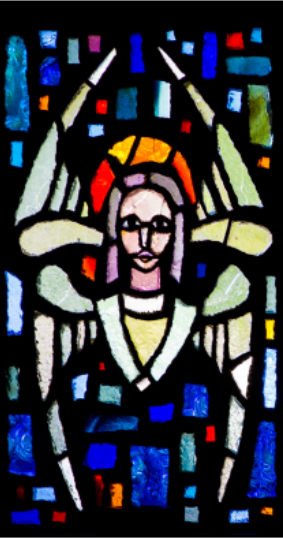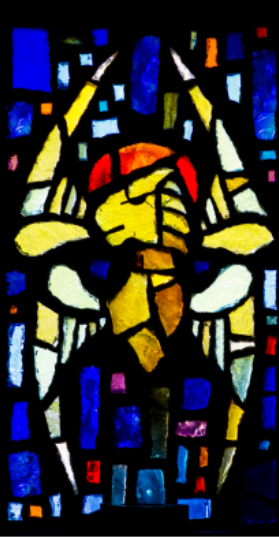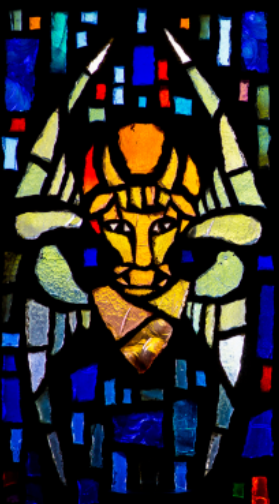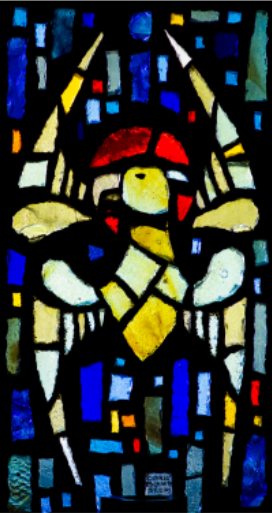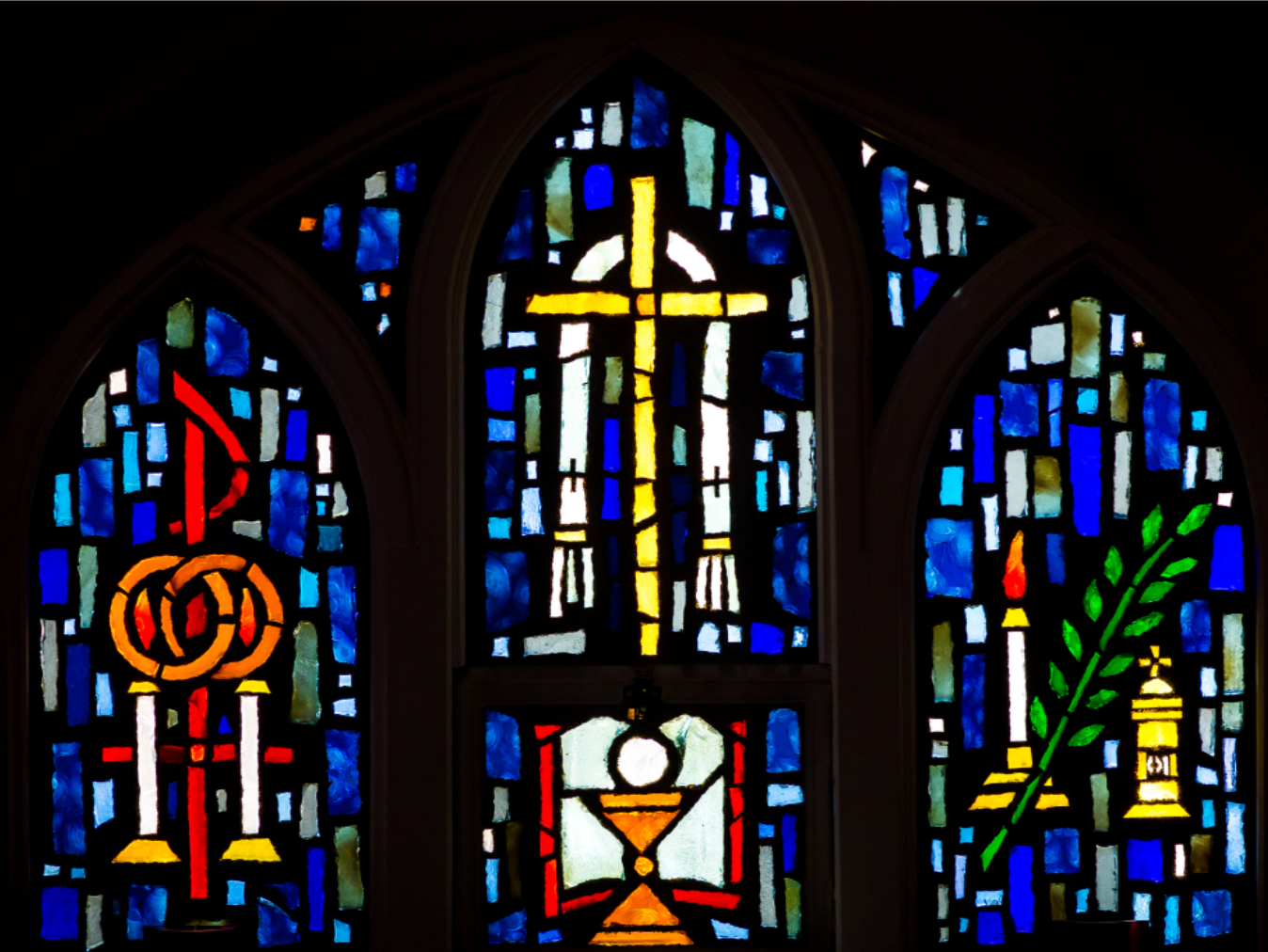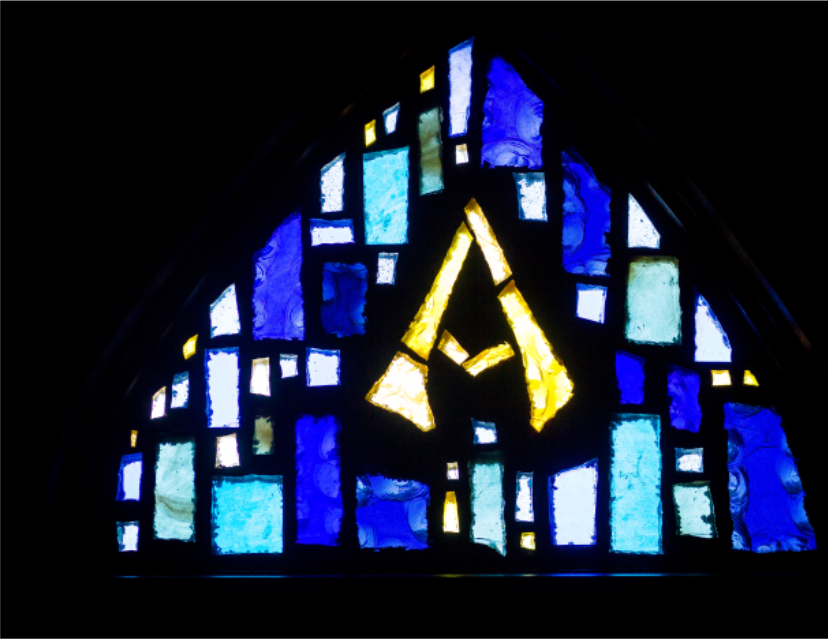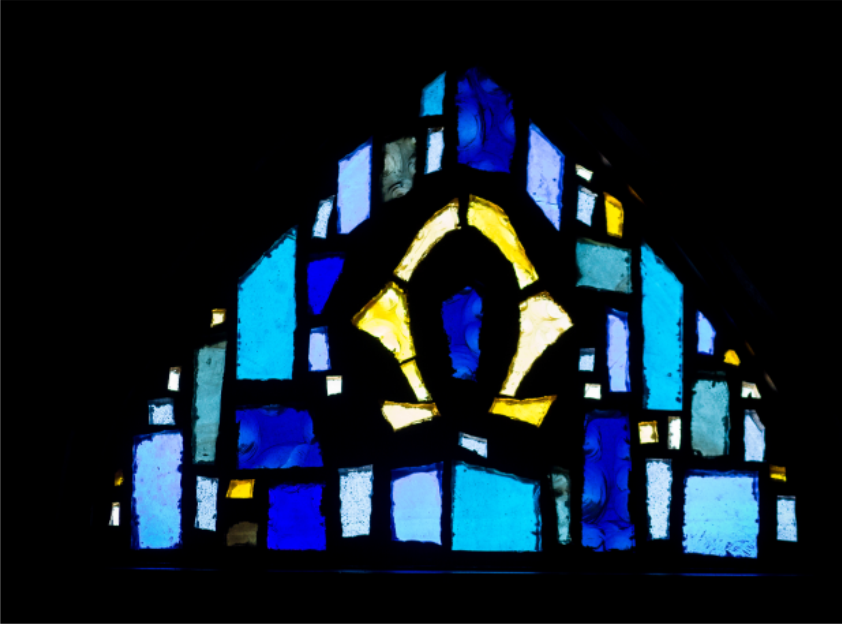Our windows
The stained glass windows that surround St. Paul’s offer a beautiful and mysterious journey through the historic Christian faith. They help us find our place, not only within the liturgical faith of the Church, but also within the journey that followers of Jesus are already on— the journey of discipleship that all are invited to begin through the Sacrament of Baptism.
We recognize the importance of the stained glass windows at St. Paul’s, the stories they tell, and the faith they teach. The captions on this page are from a project undertaken by the (now) Rev. Joel Steiner in 2016, with assistance from the Rev. Paul Nesta. These descriptions are an attempt, not only to highlight the beauty of the windows, but to offer a reflection and explanation for each of the windows.
We are all deeply appreciative for this project, and to Allison Hoover for the excellent pictures. Enjoy!
The stained glass at St. Paul’s invites us into a mature Christian life with the Triune God. The windows directly above the congregation depict the “tongues of fire” that fell on the disciples in Acts 2, displaying the presence of the Holy Spirit among them. While the lower windows invite us into the tangible ways that the Church participates in the life of Christ, the upper windows remind us that it is the Holy Spirit who makes this life possible. It is only as the Spirit graciously renews our hearts within the Church’s life of Word and Sacrament that we are able to grow together into the full measure of Christ (Eph 4:1-17).
Word and Sacrament frame and shape the Christian life because they are how the church proclaims the good news of God's redemption of the whole world through Jesus Christ. Accordingly, the Evangelists who wrote the Gospels are at the rear of the church, facing the altar where we participate in one of the Church's chief Sacraments: Holy Communion. Finding ourselves within the liturgical participation of Word and Sacrament, we encounter the grace of God in all its riches.
Below each evangelist are their ancient symbols. The winged creature with the man’s face represents St. Matthew, as his gospel traces Jesus’ human genealogy. The lion represents St. Mark, whose gospel begins, “the voice of one crying in the wilderness” (Mark 1:3), suggesting the roar of a lion. The ox is symbolic of animal sacrifices, since St. Luke stresses the atoning sacrifice of Christ. The eagle draws us to recognize the lofty narrative in St. John’s gospel.
In Baptism, the Church responds to God's grace by bearing one another to the waters of regeneration. As the Holy Spirit works in these waters, we are liberated from a self-centered life that is enslaved to sin and death, and incorporated into Christ's own Body. Now, as members of his Body, we are invited into the riches of the sacrificial love of Jesus.
The window invites us into this mystery in a number of ways. The shell and the water are the outward, tangible signs of God's grace in Baptism. The Holy Spirit, who enlivens us in Baptism, is represented by the dove. Golden rays shine forth from the dove, symbolizing the gifts that the Spirit gives us to enlighten our way. The cross reminds us that in Baptism we are united to Christ's life, a life fulfilled in his death and resurrection. The star reminds us that Christ is the light of the world, enlightening all people, and the banner reminds us that in our Baptism we are heralds of the in-breaking of the Kingdom of God.
The windows on either side of the congregation depict the tangible ways that we participate in the life of Christ: the Sacraments and the corporeal works of mercy. The remaining Sacraments are on the same side as the window on Baptism. In the left panel of the first window, confession is symbolized by a whip and keys. The whip reminds us that confession drives back our pride. The keys represent the authority that Christ gave the Church to forgive on his behalf (Matt 18:18). The central panel points to the Eucharist through the wheat and grapes that make its bread and wine. The right panel represents Confirmation when the Church confirms the work and gifts of the Holy Spirit on the baptized. The tongues of fire again symbolize the Spirit's presence in the lives of the baptized.
In the left panel of the second window, Holy Matrimony is shown by the union of two rings and two burning candles. Behind these symbols is the symbol of Christ, the Chi-Rho, revealing the true source of love and unity in marriage. In the central panel, Ordination is represented by a stole, the book of the Gospels, and the chalice and host, as ordained ministers bear the responsibility of discipling the Church through Word and Sacrament. Finally, in the right panel, Holy Unction (or the Anointing of the Sick) is symbolized by: 1) a burning candle—a sign of life and of Christ, 2) a jar of oil of the sick—a sign of the renewal of the Holy Spirit's presence, and 3) the palm branch—a symbol of our victory over death obtained through Christ.
Across on the other side of the Church are the windows depicting the corporal works of mercy. These represent the acts of charity we perform in response to the gift of God’s grace in Jesus Christ (Matthew 25:31-46).
The left panel in the first window depicts giving a drink to the thirsty (the pitcher and cup) and feeding the hungry (the loaf of bread, and a fish, cf. John 6). The top center panel represents visiting the imprisoned. The bottom center panel depicts caring for widows and orphans by echoing the window on Holy Matrimony, except now one of the spouse's ring is broken and their candle is out. The small candles represent the children. The right panel represents burying and mourning the dead. The wreath and the cross represent the church's gathering to bury and pray for those who have died. The pierced heart suggests our mourning and the dove with the olive branch suggests our confidence that the baptized share in Christ's victory over death.
The left panel in the second window depicts sheltering the stranger by showing a table, pitcher, and candle within an open door. The table and pitcher remind us of how Christ modeled hospitality for us as shared meals with outcasts and washed his disciples' feet. The candle depicts Christ's presence in the stranger. The sandals and garment in the center panel illustrate clothing the naked. The fig leaf is a symbol of modesty and of the absence of shame and embarrassment. The right panel symbolizes visiting the sick, as we often give flowers to the sick and our visits help the sick be anchored to their true source of hope: Christ.
In the transepts of the church are two human examples of God's grace: the Virgin Mary and St. Paul.
The figure of the Mother of God possesses special richness and grace by being surrounded with a brilliant aureole used only in images of Jesus and Mary in Christian art. This is reserved for them because they were the only two people to be uncorrupted by sin.
In the opposite transept, St. Paul—the patron saint of this church—holds a sword, symbolizing the sharp and decisive words of his epistles and reflecting his words in Ephesians 6:17. At his right hand is shown the earlier event of his conversion from blindness to the truth of Christ (Acts 9). On his left, St. Paul follows God's call to proclaim to the Gentiles the Gospel of Christ's reconciliation of all things to himself (Eph 1-2).
The lower panel on the left represents St. Paul's mentorship of other leaders in the church. St. Paul proclaimed that in Christ Crucified God had defeated death and opened up a way to salvation for all people. In his second letter to Timothy, Paul urges him to “endure suffering along with me, as a good soldier of Christ Jesus…” willing to endure any hardship for the glory of God (2 Tim 2:3ff). Timothy and countless others witnessed to Christ’s salvation by committing themselves to the way of sacrificial love that Christ displayed on the cross.
The lower panel on the right shows St. Paul in profound thought writing letters to encourage the Gentile Church. He holds a crucifix over a number of scrolls and two tablets that contain the Ten Commandments because in his writing Paul holds up Christ as the source and fulfillment of Israel's history with God for the salvation of the whole world.
As we depart the church through the main doors, we see the coat of arms of the Archbishop of Canterbury, reminding us that as Anglicans we belong to a global Communion that, through apostolic succession and the historic episcopate, dates back to the Apostles themselves. While Christian unity is marred, we leave the church reminded that how we love each other witnesses to Christ (John 13:35).
Finally, before the challenge of discipleship that lies ahead, we are reminded by the windows above the main doors that Jesus Christ—the Chi-Ro—is the Alpha and the Omega (Rev 21:6), the One who holds in his hands both the beginning and end of our lives. Therefore with hope and joy, we can go forth to love and serve the Lord.
We hope you have enjoyed this virtual tour and that you will visit us in person some day!




